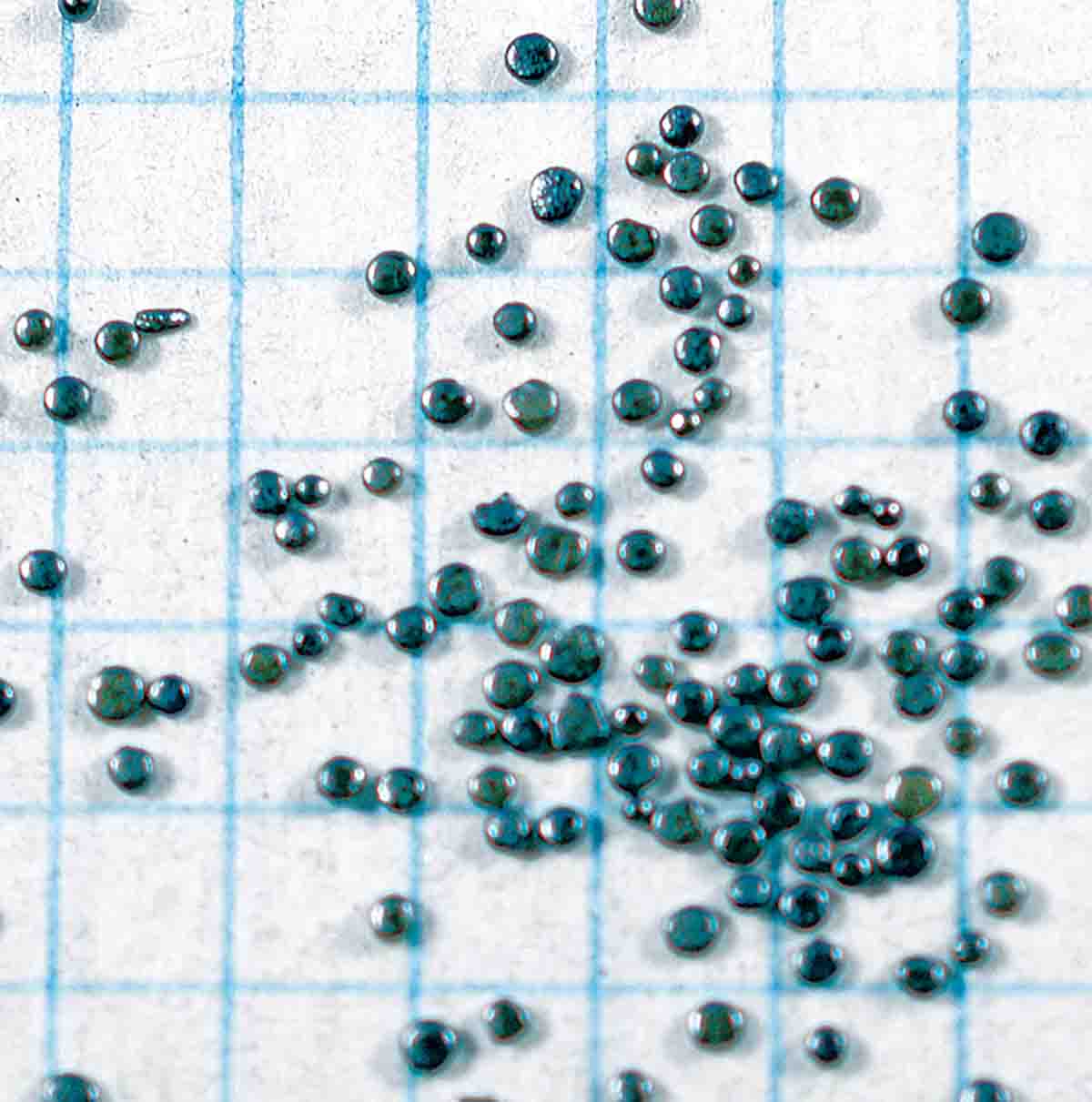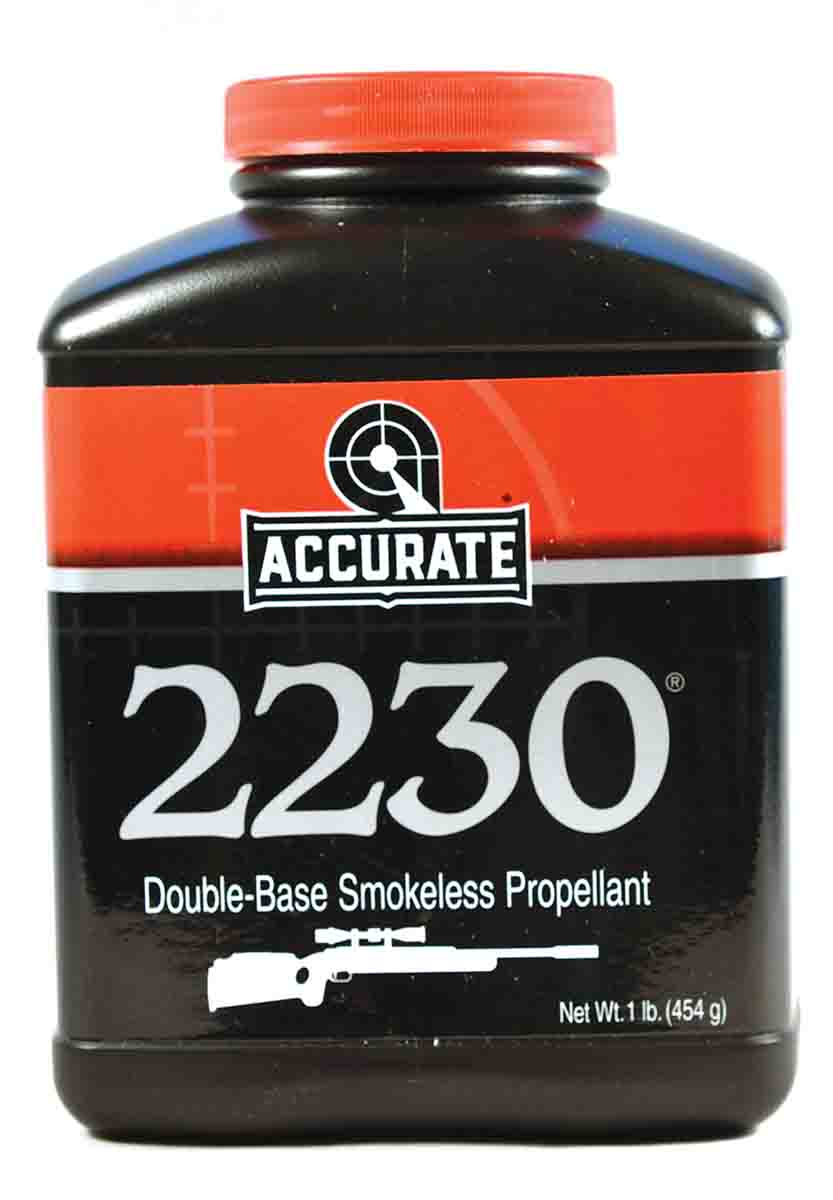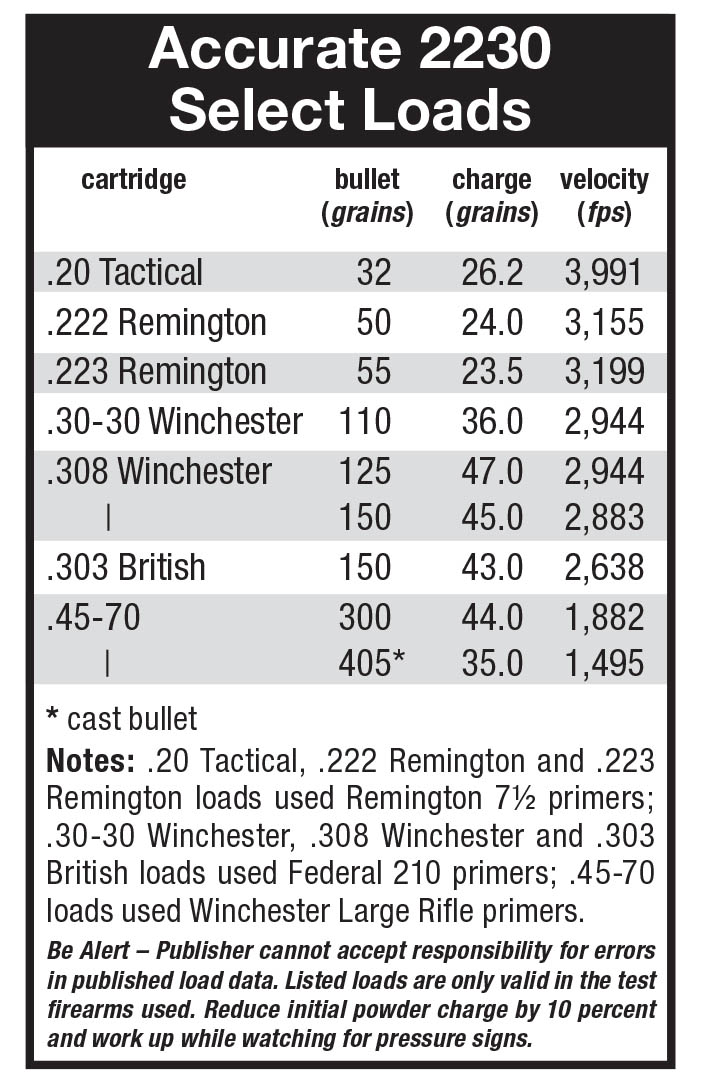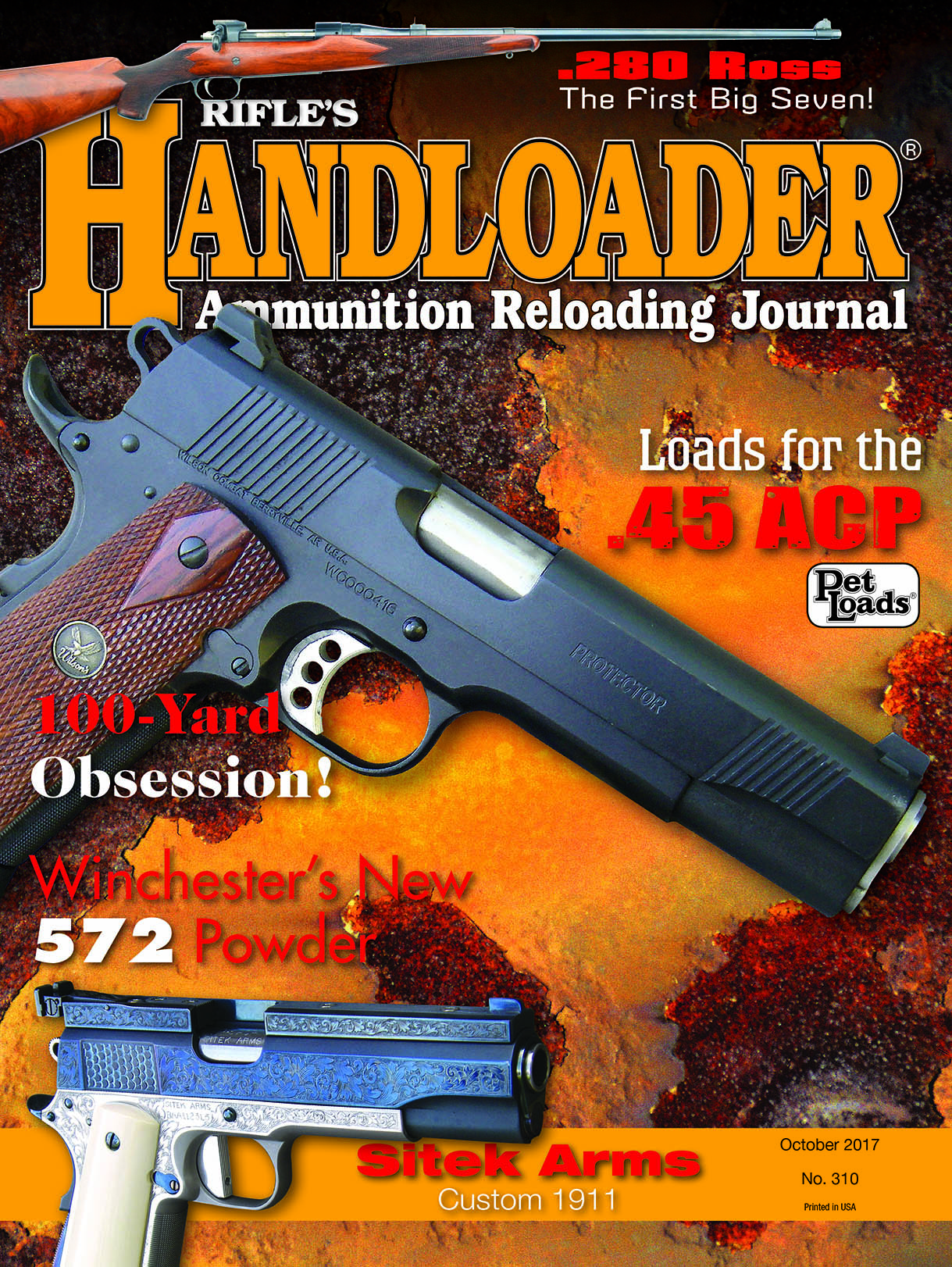Propellant Profiles
Accurate 2230
column By: R.H. VanDenburg, Jr. | October, 17
Back in 1984, when Accurate Arms was still an independent company located in McEwen, Tennessee, the company introduced a line of spherical rifle powders manufactured in Israel by Israel Military Industries (IMI). Among them was MR-223 which had been developed for the 5.56 NATO cartridge. An explosion at the IMI plant ended Accurate Arms’ source for these powders and other sources had to be found. With the change, the MR prefix was dropped from the name, and MR-223 simply became Accurate 2230. In a previous review, it was noted that A-2230 had been manufactured in Israel, South Africa, the Czech Republic and, at that time, Belgium. A recent move has finally brought the powder home, and it is now manufactured by St. Marks Powders, a division of General Dynamics in St. Marks, Florida.

Readers may recall that Western Powders, Inc. purchased the Accurate Powder smokeless powder line in 2005 and moved operations to Miles City, Montana. Since then, Western has systematically been reining in its Accurate production, first moving its extruded powder line to the General Dynamics facility in Ontario, Canada, where IMR powders are made. A few years ago, the company began shifting its spherical handgun powder manufacturing to St. Marks Powders (SMP) and now, the spherical rifle powder line is following suit. Actually, some Accurate spherical rifle powders were originally manufactured by SMP, but now they all are. Accurate 1680, A-2200 and A-2700 have always been SMP powders. Now, A-2230, A-2460 and A-2520 are as well. To that end, samples of the latter three were recently received.
Accurate 2230 is a spherical, double-base powder with a nitroglycerin content of 10 percent. Average grain size is .022 inch. Bulk density is given as 1.000 g/cc. Metering, as might be expected, is exceptional. Powders with similar burning rates include IMR-3031, Hodgdon’s Benchmark, H-322 and Norma 201, all on the faster side, with IMR-8208 XBR on the slower side, according to the Hornady Handbook of Cartridge Reloading, 10th Edition.
My first impulse, and the reason for this review, was to compare the burning rate of the new A-2230 with an older lot from Belgium. In spite of strong efforts to maintain consistency when changing sources, things sometimes change. The new lot of A-2230 turned out to be a little bit slower-burning but, as is sometimes the case, its velocities were closer to those published by Western Powders. To put it another way, my Belgium-produced lot appears to be a tick faster-burning than the published data.
For example, in the .222 Remington using Winchester cases, Remington 7½ primers and a Hornady 50-grain bullet, Western Powders’ Reloading & Load Data Guide, Edition 6.0 lists 24.0 grains of A-2230 as having a muzzle velocity of 3,170 feet per second (fps). Using the same components – different lots, of course – my Belgium-made A-2230 provided 3,223 fps; the new A-2230 lot from Western Powders reached 3,155 fps. Not a lot of difference, but SMP powders are likely to be held to closer tolerances than the previously manufactured European powders. Going forward, this is a very good thing. This, along with more controllable delivery schedules, makes this change something to cheer about.

I was quite impressed with A-2230 in the .20 Tactical, especially with the Hornady 32-grain bullet, and in the .222 Remington with Barnes 50-grain Varminator HPs. In the .223 Remington, A-2230 is best with bullets up to 55 grains in weight. Beyond that, velocity is lost to slower powders but accuracy may not be. Interestingly, the Hornady manual limits A-2230 to 35-grain bullets in the .223 Remington, whereas the Western manual, logically enough, pairs it with everything from 30 grains to 90 grains. Not exceeding 55 grains in bullet weight with this powder in this cartridge may still be the best course to follow, I suspect.
With the .30-30 Winchester, the powder is excellent with lightweight bullets. As a preseason tag-along load, a 110-grain bullet is ideal for dispatching the odd varmint and pulverizing rocks.
Likewise, in the .308 Winchester a 125-grain bullet serves the same purpose. A Hornady 150-grain bullet over 45.0 grains of A-2230 makes for a fine hunting load. Ditto for the .303 British; a Sierra 150-grain bullet pushed along by 43.0 grains of A-2230 in my Ruger No. 1 performs admirably on deer-size game.
Moving up to the big bores, I’ve used A-2230 in the .45-70 at lever-action pressures (not to exceed 28,000 psi) with several bullet weights. Because of the change in manufacturing sources, published load data has changed from time to time. Using the most current Western Powders data, I shot A-2230 loads again and had to cut charges a bit. Last time, 48.0 grains of A-2230 shot Sierra 300-grain bullets from a 26-inch barrel at 1,920 fps. Now, 46.0 grains is maximum. I found 44.0 grains to produce a more satisfying load when attempting to duplicate the old Winchester high-velocity load of 1,880 fps with a 300-grain bullet. Cast bullets of 400 or 405 grains also match up well with A-2230. A Meister Bullets 405-grain FP performed well over 35.0 grains, though this is below the published starting load. This load used a Winchester Large Rifle primer.
There is a lot going on at Western Powders these days with several new powders having been introduced, with more on the way, and a new “big book” reloading manual. As always – especially as powder sources change – use only the most recently published load data.



